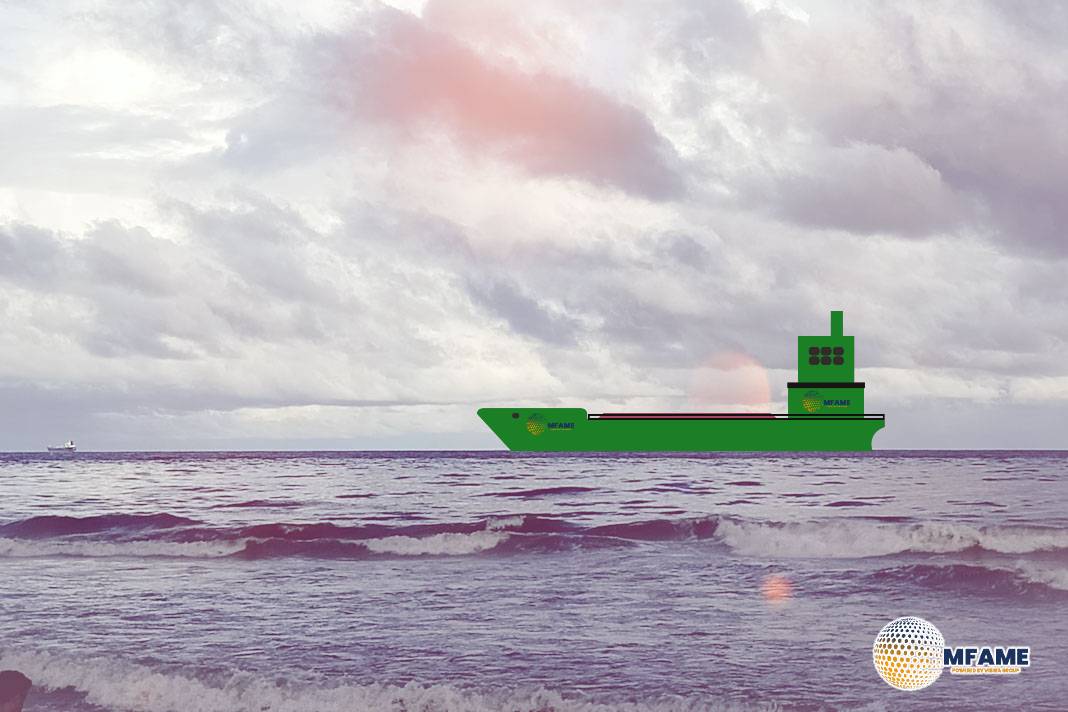This incident illustrates a collision between a large bulk carrier and an offshore supply vessel (OSV) in a foggy channel, highlighting critical failures in navigation, communication, and bridge resource management.
Incident Overview
A bulk carrier, having departed its dock, proceeded outbound in a channel despite deteriorating visibility due to heavy fog. Simultaneously, an OSV was inbound in the same channel. The bulk carrier, influenced by a starboard beam wind, was unknowingly being set to its port side, directly into the path of the oncoming OSV. Despite both vessels having pilots onboard and the port operating a Vessel Traffic Service (VTS), a collision occurred in a channel turn due to a series of misjudgments, distractions, and failures in communication.
Factors Contributing to the Collision
Several critical factors contributed to this incident:
- Poor Navigation and Situational Awareness on the Bulk Carrier: Proceeding in Heavy Fog: While pilots normally avoided getting underway in heavy fog, the decision to continue transit once already underway led to operations in significantly reduced visibility. The bulk carrier was steadily being pushed to port by the wind, a deviation that went unrecognized by both the pilot and the bridge team. The Master was on the phone, completely relying on the pilot for navigation, failing to maintain overall command responsibility and situational awareness. The rest of the bridge team was distracted by the fog and lack of visual references, indicating a lapse in proper lookout and monitoring of instruments. The pilot was distracted by radio communication with another pilot about the fog, diverting attention from the primary task of navigating the vessel.
- Failures in Communication and Assumptions on the OSV: Pilot’s Inaction Despite Awareness: The OSV’s pilot, using radar and ECDIS, recognized the bulk carrier encroaching on his side of the channel but chose not to communicate his concerns directly to the bulk carrier. He incorrectly assumed the bulk carrier’s pilot would correct course or that VTS would intervene. The OSV’s Master independently identified the impending risk and discussed it with his pilot. However, the pilot merely acknowledged awareness and stated he would continue to monitor, leading the Master to assume appropriate action would be taken. This highlights a breakdown in effective challenge and intervention within the OSV’s bridge team. Despite both vessels being aware of each other’s presence and potential collision course, there was no direct communication between the two vessels to agree on a passing arrangement.
- VTS Lapses: Despite monitoring all vessel traffic and typically contacting vessels off course, the VTS did not raise any concerns or provide warnings as the two vessels dangerously converged. This represents a significant missed opportunity for a shore-based intervention that could have prevented the collision. While VTS typically provides information and does not direct traffic, its role includes identifying risks and resolving dangerous situations.
- Delayed Evasive Action: The evasive maneuvers (full starboard rudder and full power) ordered by the OSV’s Master and pilot were initiated too late, as the vessels were already entering the turn in the channel, making a collision unavoidable.
Consequences and Lessons Learned
The collision resulted in severe damage to the bow of the bulk carrier and the port side of the OSV, incurring millions of dollars in repair costs and significant off-charter time. Fortunately, no injuries were reported, which was attributed in part to the OSV’s last-minute actions, which, while failing to prevent the collision, avoided a more catastrophic bow-to-bow impact that could have resulted in fatalities.
This incident underscores the critical importance of:
- Vigilant Bridge Resource Management (BRM): All members of the bridge team, including the Master and pilot, must maintain full situational awareness, actively monitor navigation, challenge assumptions, and communicate effectively, especially in restricted visibility. Over-reliance on any single individual or external service is hazardous.
- Proactive Risk Mitigation in Restricted Visibility: Strict protocols should be in place for operations in fog, including reduced speed, enhanced lookout, and immediate communication of any perceived risk.
- Effective Communication: Clear, unambiguous communication between vessels, and within the bridge team, is paramount. Assumptions should never replace direct communication and confirmation of intentions.
- VTS Role: While VTS primarily provides information, its function to monitor traffic and identify potential hazards is crucial. Timely warnings from VTS can be a critical safeguard.
Did you subscribe to our daily Newsletter?
It’s Free Click here to Subscribe!
Source: The American Club

















